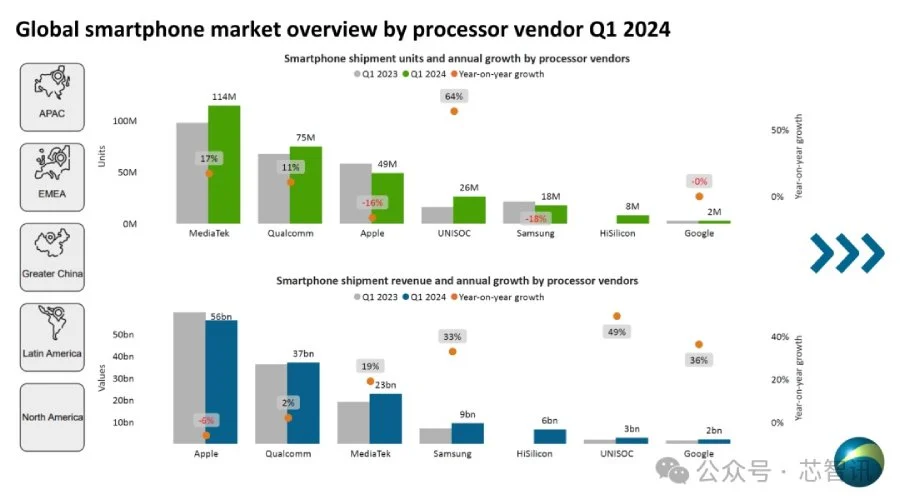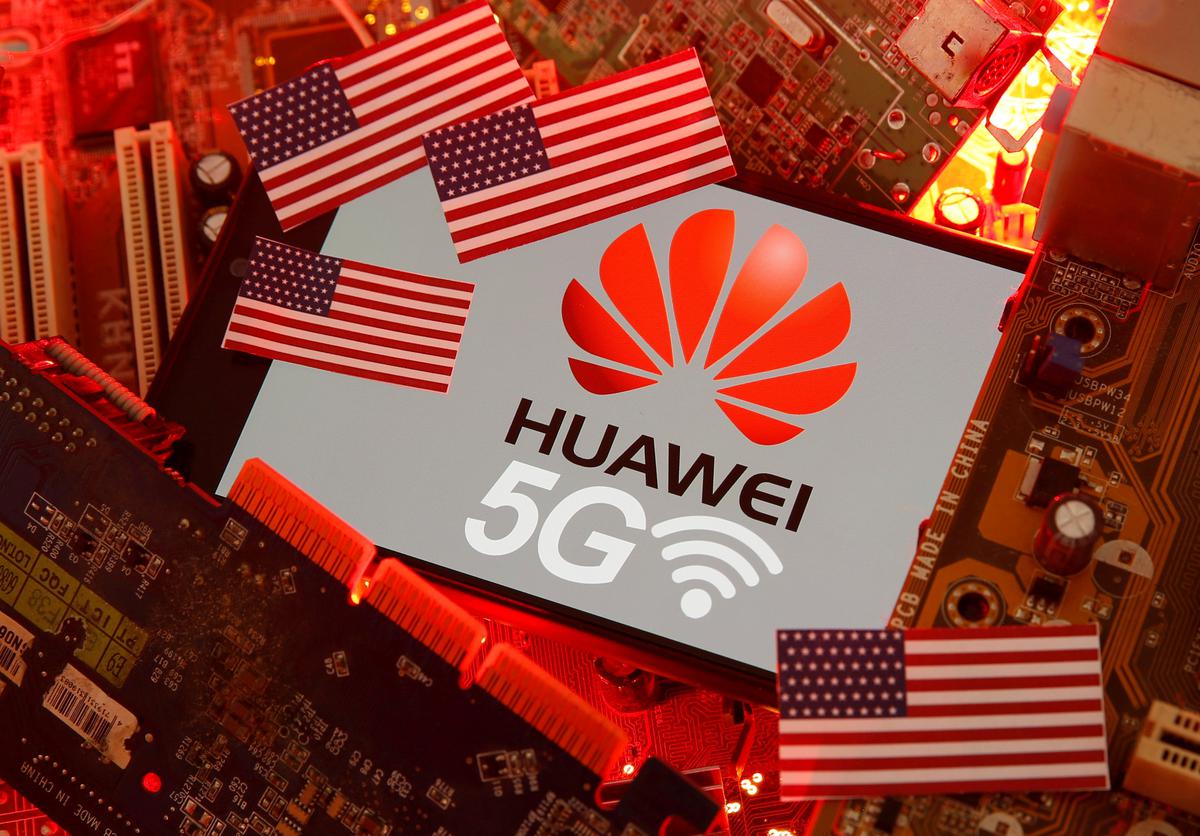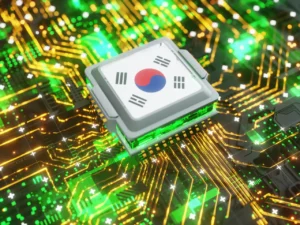Introduction
Huawei’s HiSilicon’s division, known for its Kirin chipsets, is showing notable signs of recovery in the competitive smartphone chipset market.

According to data from Canalys, HiSilicon shipped 8 million Kirin units in the first quarter (Q1) of 2024, generating a substantial $6 billion in revenue.
Follow us on Linkedin for everything around Semiconductors & AI
Background on HiSilicon’s Kirin Chipsets
HiSilicon, a semiconductor company owned by Huawei, develops the Kirin series of chipsets.
These chipsets are integral to Huawei’s smartphones and other devices, offering competitive performance and efficiency.
TheHiSilicon’s Kirin brand has been central to Huawei’s strategy of creating high-performance smartphones, which has been crucial for competing with industry leaders like Apple and Samsung.
However, HiSilicon’s Kirin faced significant challenges in recent years due to US sanctions imposed on Huawei.
These sanctions restricted the company’s access to essential technologies and partnerships, leading to a decline in production and shipments.
Despite these obstacles, Huawei has been working to revitalize its semiconductor business and regain market share.
Read More: $445 Million in Damages: Jury Slaps Micron in Patent Trial Against Netlist – techovedas
Significant Growth Amid Stiff Competition

This performance marks a significant improvement compared to previous quarters, highlighting Huawei’s efforts to regain its foothold in the market.
Despite these gains, Huawei still trails behind industry giants like Samsung, MediaTek, Qualcomm, and Apple.
However, the company managed to surpass Google’s chipset shipments and revenue in Q1 2024. Google shipped only 2 million of its smartphone SoCs, earning $2 billion in revenue.
Huawei’s HiSilicon’s division witnessed a remarkable surge in Q1 2024, with 8 million Kirin chipsets shipped, generating $6 billion in revenue.
Market Leaders: Samsung, MediaTek, Qualcomm, and Apple
In the broader market, Samsung and MediaTek continue to dominate. Samsung shipped 18 million units, resulting in $9 billion in revenue.
MediaTek led in terms of volume with a staggering 114 million units shipped, securing $23 billion.
Qualcomm also posted impressive numbers, selling 75 million smartphone SoCs and earning $37 billion in revenue this quarter.
Apple, while still the leader in chipset revenue, experienced a decline compared to the same period last year. The company shipped 49 million units, generating $56 billion, a drop from previous figures.
Huawei’s Impact and Future Prospects
Huawei’s resurgence, though modest with a 2.7% market share in Q1 2024, is beginning to impact the market dynamics.
Notably, Apple’s revenue and shipment momentum are feeling the pressure from Huawei’s renewed competition.
Looking forward, Huawei is expected to continue its upward trajectory with the anticipated launch of the Mate 70 series in October and the HarmonyOS Next operating system in September.
HarmonyOS, developed in-house, aims to reduce Huawei’s reliance on Google’s Android platform, potentially offering a unique edge in the market.
Challenges and Strategic Moves
Despite the positive trends, Huawei faces significant challenges in reclaiming its previous market share from established players like Samsung, MediaTek, and Apple.
The company’s strategy includes not only enhancing its hardware offerings but also bolstering its software ecosystem through HarmonyOS.
Read More: From Real Estate to Data Wave: Rustomjee to Build Data Center in India – techovedas
The Road Ahead
The chipset market remains fiercely competitive, with every major player striving to innovate and capture more market share.
Huawei’s ability to sustain its growth will depend on multiple factors, including technological advancements, strategic partnerships, and market acceptance of its new products.
As Huawei gears up for the launch of its next-generation devices, industry watchers will be keen to see how the company navigates the competitive landscape and leverages its strengths to carve out a larger share of the market.
Read More: What is a Data Center And Why It’s Considered Backbone of 21st Century Digital Age – techovedas
Conclusion
Huawei’s HiSilicon’s Kirin division has made impressive strides in Q1 2024, with its Kirin chipsets showing strong growth.
Surpassing Google in shipments and revenue is a noteworthy achievement, but the road ahead is filled with challenges.
With strategic product launches on the horizon and a focus on reducing dependency on external platforms, Huawei is positioning itself for a potential comeback in the smartphone chipset market.








